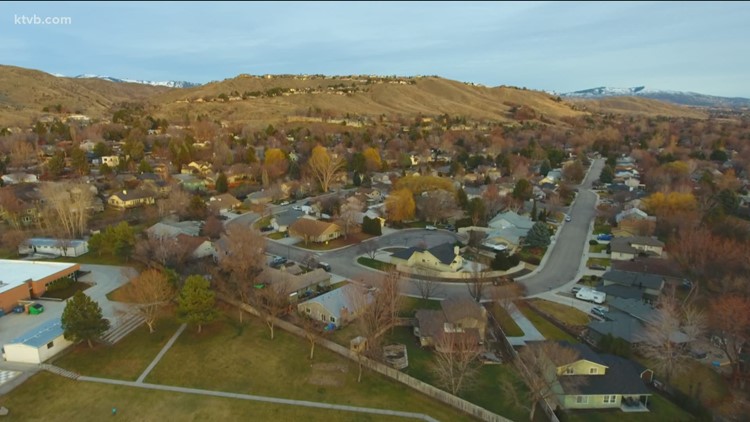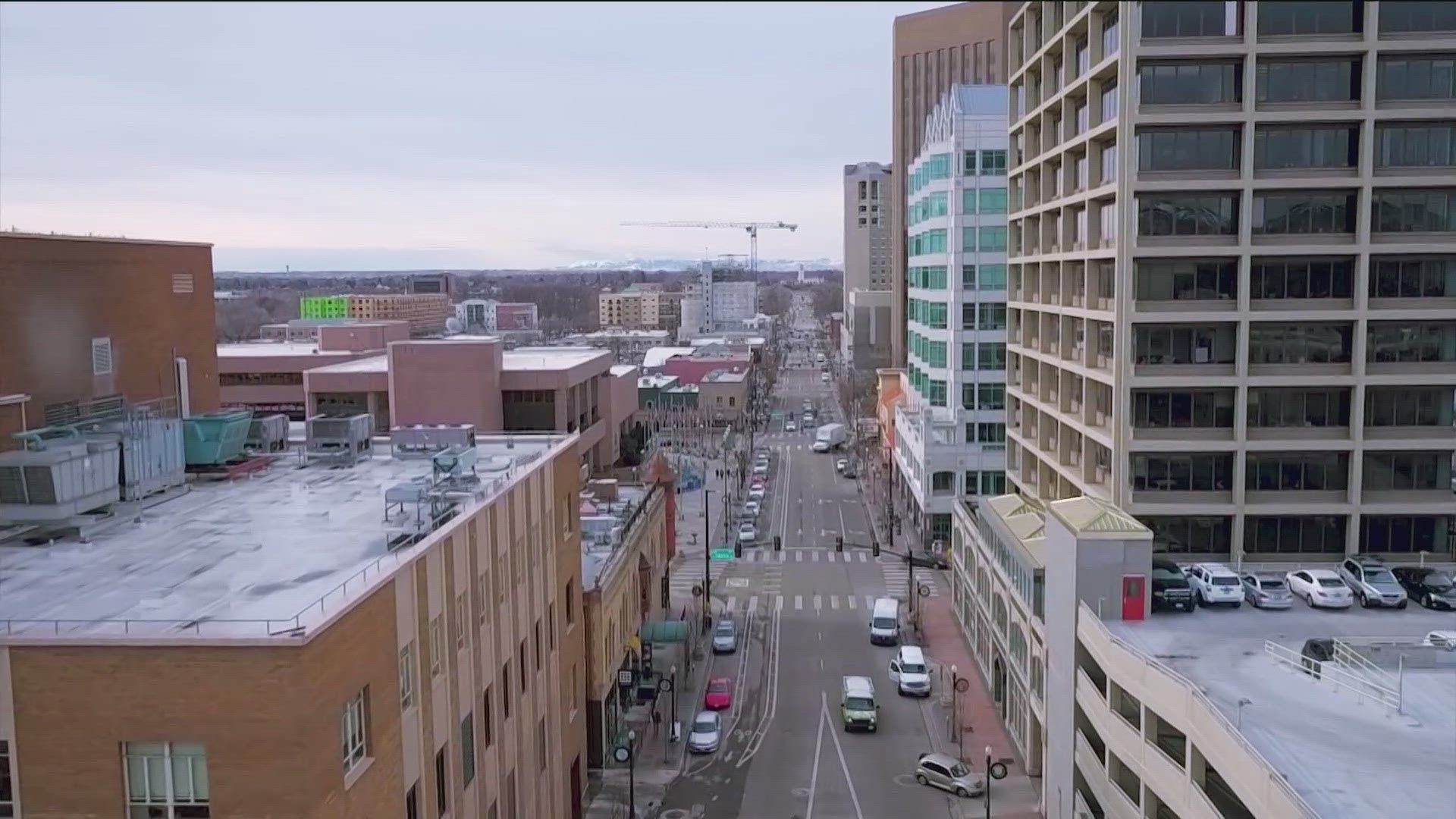BOISE, Idaho — Editor's Note: This article was originally published by The Idaho Press.
As the Treasure Valley’s population keeps growing, the abnormality of 2020 only amplified the trends fueling the area’s boom.
The No. 1 state sending newcomers to the Treasure Valley during the pandemic continued to be the state of Idaho itself, followed by California and Washington.
In-state moves to the Boise metro grew by 5.6% last year, with 64,493 Idahoans moving to the Treasure Valley compared to 61,099 the year before, according to a recent report from CBRE, a commercial real estate services firm.
Californians accounted for 10,073 of last year’s new moves into the Boise area. That was up 27.5% from the year before, which saw roughly 7,900 Californians move to the Treasure Valley.
Moves in from Washington increased from 2,285 to 2,776 (21.5%).
“All these trends we saw before the pandemic,” said Matt Mowell, a senior economist at CBRE. “The pandemic really sped that up.”
CBRE compiled the information based on postal service address changes and compared 2019 statistics to 2020. Though the address changes might not capture everyone, such as people moving from abroad or recent college graduates, it provides a snapshot from one year to the next.
U.S. Census data on state-to-state migration in 2020 will be released this summer. In the previous four years, California and Washington made up the top two states responsible for Idaho newcomers.
Last week, census data showed Idaho’s 17.3% population growth in the last 10 years made it the second-fastest growing state, only trailing Utah’s 18.4%.
From 2010 to 2014, Idaho’s annual net migration — the difference between people moving in and people moving out — averaged 2,933, based on Census Bureau statistics. From 2015 to 2019, it spiked to 19,428.
Oregon, Utah and Arizona were third, fourth and fifth in where most new Idahoans moved from in 2019 Census data. They also made up the fourth, sixth and fifth states, respectively, responsible for the most people moving into the Boise metro area in 2020, according to CBRE.
While industry experts widely considered the idea that the pandemic could shift moving patterns, time to reflect displays a clearer picture: The pandemic didn’t necessarily change moving patterns, but amplified them.
On a national scale, the trend in Boise mirrored Sun Belt cities like Charlotte, North Carolina; Austin, Texas; and Dallas, which were similarly growing rapidly pre-pandemic.
CBRE Research Director Eric Willett explained Boise’s growth as a result of both push and pull factors.
“The push factor being the relatively high costs in the coastal areas. The impact of the pandemic, closing many of the urban amenities that were a reason why people located in dense cities like San Francisco or Los Angeles,” Willett said. “On the pull side, Idaho and metros like Boise are really attractive lifestyle locations.”
The number of people moving to Idaho from out of state grew by 21% in 2020 — the fifth-highest increase nationwide. The Gem State trailed Vermont (36%), Maine (27%), Connecticut (25%) and Montana (23%). These states lean toward smaller populations and smaller metros.
Mowell pointed out how many people left dense urban cores and spread outward to suburbs without fully leaving the metro area. People spending more time at home put a premium on space, he said.
The people moving most often were young, affluent, urban and childless, according to CBRE’s research. Without the typical draws of a city because of health concerns, those people frequently took advantage of being untethered.
“Overwhelmingly the change in migration patterns from the last year has been driven by unique subsets,” Mowell said.
The five metro areas responsible for the most move-ins into Boise in 2020 were:
- Los Angeles (2,299 move-ins)
- Seattle (1,507)
- Portland, Oregon (1,185)
- Riverside, California (1,174)
- Sacramento, California (1,117)
From 2019 to 2020, each of those top four cities saw at least a 23% increase in moves into Boise.
In late April, the Community Planning Association of Southwest Idaho, or COMPASS, announced its Ada and Canyon counties combined population estimate at 761,680, an increase of nearly 24,000 from April of 2020.
Idahoans who are relocating to a new home are facing a timing challenge. Terry Bruns, the franchise owner of a Two Men and a Truck location in Boise, deals most with local moves. The influx of new people and competition in the housing market has led to more locals using his moving and storage company while in the middle of a move, he said.
“Just the sheer shortage of inventory causes people to have this gap in time,” Bruns said, “between when they have to be out of their old house and when they have to be in their new house.”
While Boise’s growth likely won’t be compounded as much once the pandemic slows, Willett believes it will stay on the upswing.
“Looking over history, migration trends are very durable,” Willett said. “The shift was substantial, and we expect these pathways and economic connections will continue to support the long-term growth in those migration patterns. We expect going forward there will continue to be robust growth for Idaho.”
Paul Schwedelson covers growth, Nampa and Caldwell. Follow him on Twitter @pschweds.



